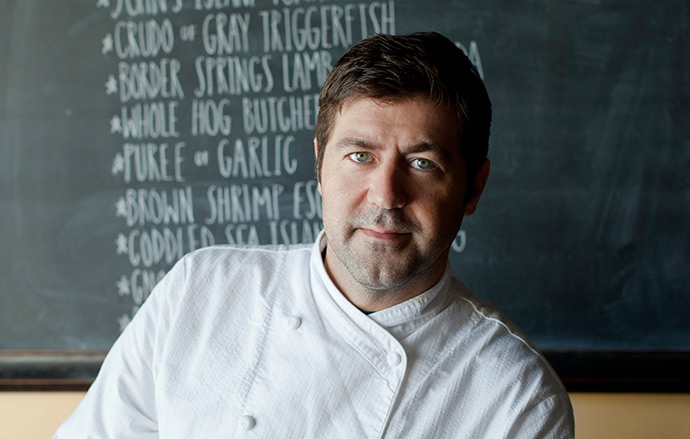
No discussion about Charleston’s on-fire food scene is complete without a nod
to Mike Lata. His first solo project, FIG, was a pioneer of the city’s latest generation of eateries, while the Ordinary, his follow-up concept and a 2013 Best New Restaurant nominee, is a reconsideration of the classic seafood restaurant. In the interview below, Lata discusses how he applies nose-to-tail philosophy to seafood, the Carolinas’ unique “merroir," and his favorite dishes at the Ordinary.
--
JBF: Your menu celebrates the “merroir” of the coastal Carolinas and the East Coast. How would you describe the merroir of the Carolinas? What's unique about it?
ML: What's unique to the Carolinas is pluff mud and the high salinity content of our water. Wild oysters that grow deep in the pluff mud are firmer, larger, and a little earthier, while the oysters that grow in oyster beds and are exposed to ocean air at low tide tend to be saltier.
JBF: You have said that you wanted to make the Ordinary a "culinarily driven" seafood restaurant. Can you talk about what that means and how this idea has been realized at the restaurant?
ML: Until recently, most seafood restaurants had a prescribed format: crabcakes, fried fish platter, an à la carte fin fish selection, and so forth. We hadn’t seen a seafood restaurant embrace the nose-to-tail approach like chefs have done with hogs, lambs, and beef—we wanted to create a dining experience that utilized every ounce of fish. At the Ordinary, we use cheeks, collars, skin, bones, ribs, etc. Right now we're making a fish head terrine, which is a great example of a dish that utilizes the whole fish.
JBF: We read that you wanted to use the Ordinary to promote unknown seafood species. How has that gone so far?
ML: We're fortunate to have such a great clientele in Charleston. Our customers are very loyal and trust that we are not putting something on the plate that isn’t delicious. Our philosophy at FIG and the Ordinary has been to thoroughly educate the staff so that they understand the cuisine and what it's like for the customer to order a dish they might not have heard of. They try all of the dishes, learn from the kitchen about what makes it different, and we entrust them to educate customers.
We're also fortunate to have great purveyors and long-standing relationships with local fisherman, who are challenged to find us something we might not have had before. Recently, they've been catching skipjack tuna, bonita, and other fish at the end of their trips. When they get to us, the fish is literally just out of the water and it's remarkable. Charleston is under a microscope right now: once we find a "trash fish" and use it, it gets picked up and sent to other markets, [where it] gains traction and popularity.
JBF: What's your favorite dish on the current menu?
ML: Our chef de cuisine is working on different fish terrines that are really nice. We layer the fish (recently skate) with potatoes, shallots, and herbs. It's a dish that’s really different but speaks perfectly to our concept.
We've also taken a page from the brasserie playbook and riffed on steak frites. At the Ordinary, we make fish frites using fresh grilled fish, like wahoo or swordfish, with herb butter. It's not exciting on paper, but it's the kind of dish you want to get off your couch for.
JBF: What are you favorite cookbooks and why?
ML: As a chef, I love cookbooks that are based on technique and that convey technique through a story. A Return to Cooking by Eric Ripert and Michael Ruhlman is an amazing cookbook. The writing is fantastic, it's visually breathtaking, and its unique approach feels relatively spontaneous. I still look at it quite often.
JBF: Last question: what is your earliest food memory?
ML: My Polish grandmother made the best pierogi in world. She told me this story so many times growing up that I can picture it: she handed me one when I was still a baby, and I held it in my hand. My first word to her was "more". I so clearly remember growing up and eating those pierogi, which made me so happy. As a chef, I think it's important to know how much joy food can bring to someone.
About the author: Anna Mowry is senior editor at the James Beard Foundation. Find her on Twitter and Instagram.



-57 web.jpg)


